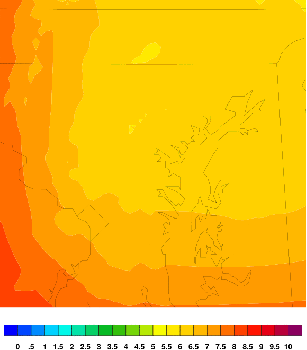Windows Azure is a powerful cloud computing solution that can significantly improve your access to high performance computing (HPC) resources and applications. This tutorial will help you fit Windows Azure into your workflow by guiding you through the straightforward process of migrating a parallel HPC application from Linux to Windows Azure. Welcome! Soon you’ll be running parallel HPC applications in the cloud.
We will cross-compile the Weather Research and Forecasting (WRF) model for Windows Azure from an HPC Linux installation. WRF is a next-generation mesoscale numerical weather prediction system designed to serve both operational forecasting and atmospheric research needs. It is widely used by #researchers and policymakers to better understand many phenomena like hurricanes, wildfires, and climate change.
The Azure Weather Service uses WRF and NOAA data to calculate interactive forecasts for hundreds of locations around the world. This forecast shows water vapor, surface wind and temperature over Baltimore, Maryland USA for approximately 24 hours on 20 March 2012. After this tutorial, you will be able to run similar simulations on Windows Azure.

 This work was sponsored by the Microsoft Developer and Platform Evangelism Team.
This work was sponsored by the Microsoft Developer and Platform Evangelism Team.
1.1. Overview and Navigation
Use the slideshow navigation controls next to the page title and the links at the bottom of the page to navigate through the tutorial. Click here if you prefer to view the whole tutorial as a single, printable document.
This tutorial will take between two and four hours to complete and consists of the following steps:
Continue to Step1: Prepare all required libraries when you are ready to begin.